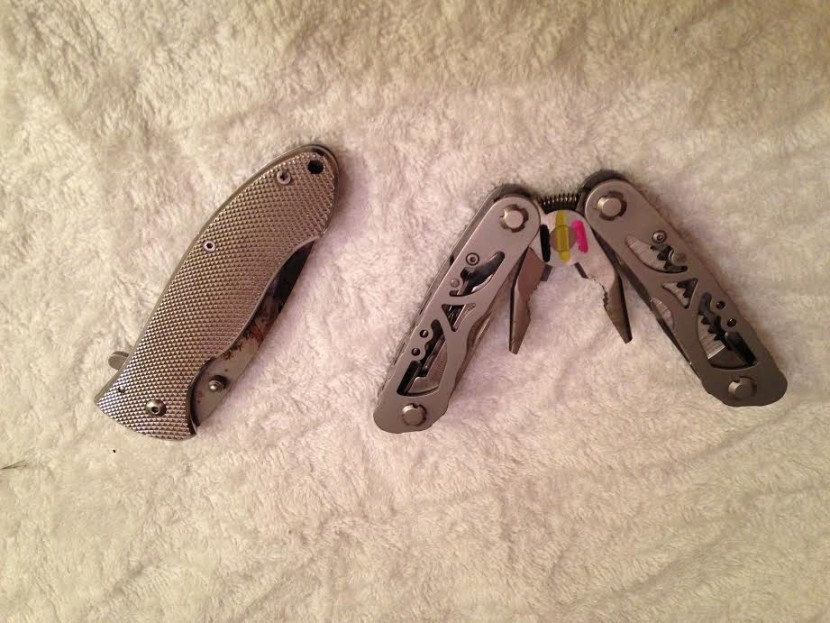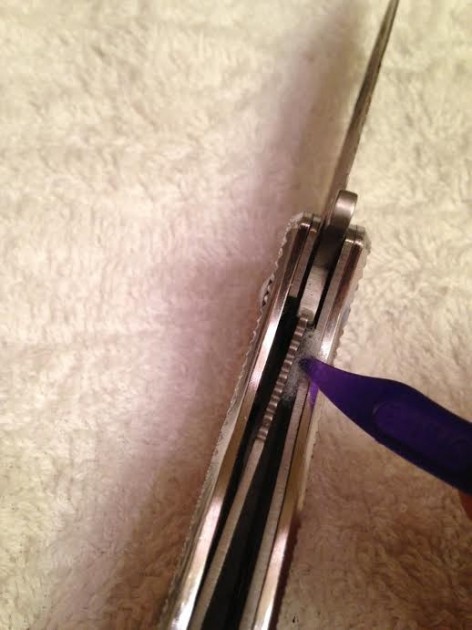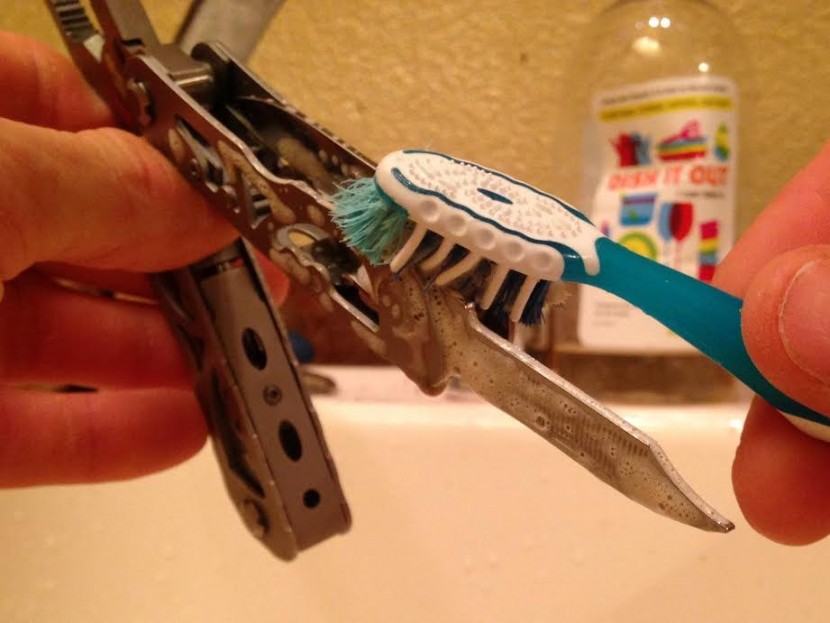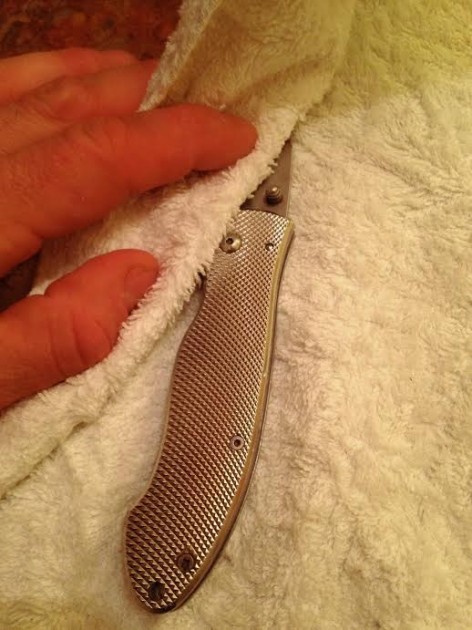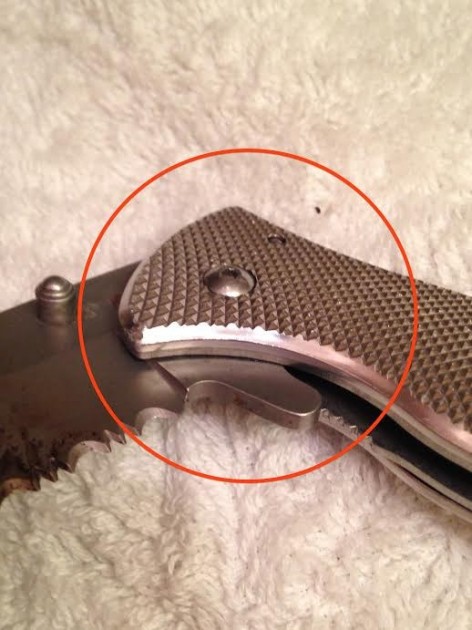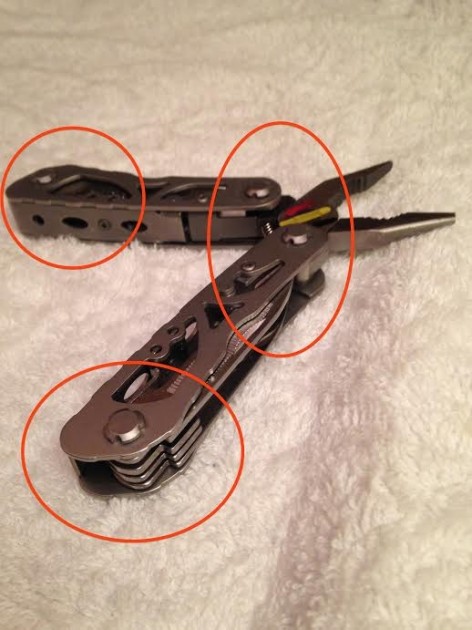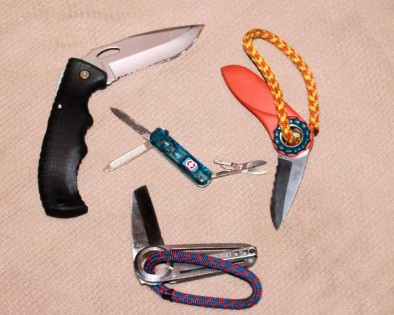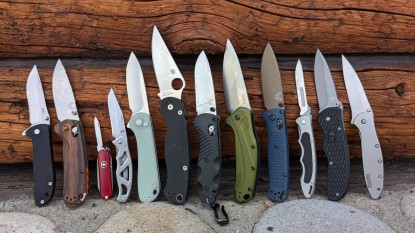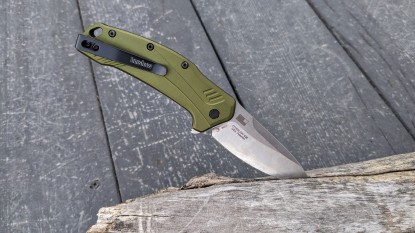A pocket knife is a handy thing to have…but it's not so useful if it's dirty and dull. Keeping it sharp and clean is essential for safety, whether it's a Swiss Army Knife, a multi-tool or a single-blade model. A dull knife leads to unsafe practices when making desired cuts; a dirty knife won't close properly which can make for a dangerous situation.
For more tips on sharpening your pocket knife, read How to Sharpen a Pocket Knife.
For cleaning, here are some items you can find around the house:
- A small brush such as an old toothbrush
- Toothpicks
- Q-tips
- Lubricant (mineral oil, sewing machine oil or gun oil)
- Mild soap and warm water
- Paper towels
It usually doesn't matter whether your knife has a metal, plastic or wooden handle. (Later in this drill we deal with giving extra care to a wooden handle and dealing with rust). Here's how to get started:
Use toothpicks to deal with lint and gunk
Open the knife and with toothpicks remove lint or gunk stuck in the handle.
If the locking mechanism isn't working properly, this may fix it. Do this with a dry knife; otherwise the wet stuff will be harder to clean out.Rinse it and scrub it down
Now that you are done with the gunk, move to a sink and run the knife under warm water, flushing the inside of the handle. With a drop of soap on your brush, thoroughly but carefully scrub the entire knife. Pay close attention to the lock mechanism, making certain you remove any crud, sand or dirt. This will enable a secure catch when the knife is in its open position. Scrub the entire blade and handle.
Clean each tool individually, then clean the inside
When cleaning a multi-tool or Swiss Army style knife, begin the scrubbing process by opening a single tool at a time. Scrub the tools one by one, then close them. Once each is cleaned individually, open them all together and again scrub and clean them and the inside of the body. Use the Q-tips to clean out the inside area, getting into corners and grooves. Rinse the knife thoroughly and then carefully dry it with a towel.
Dry the entire tool and let it fully air dry
Do not take apart your knife to clean the insides, as this will probably void the warranty given by most companies. If you have a serious problem with your tool, most companies have excellent warranties and will fix your tool if you mail it back to them. In fact, most of the time if you mail it back, they will fix it, clean and professionally sharpen the blade. Not a bad deal!
Lube it up, but do so sparingly
Once the knife is thoroughly dried, it's time to lubricate the pivot, blade and any moving parts. There are several kinds of lubricant that you can use; most are petroleum based products that are the same as any lube you might use for a sewing machine or as gun oil. While these may work the best, if your knife is also an eating utensil, you may want to consider a food safe lube. We prefer mineral oil, although you could use vegetable oil as well.
Wipe it all down
Apply the lubricant sparingly, dabbing it onto the hinges and moving parts. A little goes a long way so don't use too much. Use paper towels to wipe excess oil from the surface. It is a good idea to wipe down the blade, tools and the handle to prevent any future rusting. Even if your tool is stainless steel it can rust; but don't go crazy, a small amount will work.
If you have a wooden handled knife, it it's important to wipe the handle down with oil; mineral oil is perfect, although linseed oil is favored by many craftsmen.
Cleaning your knife is not difficult, but it is important. Properly caring for your tool not only ensures it will function properly, but it also helps you maintain a higher level of safety.
What about rust?
If your blade suffers from rust, first determine how badly it is rusted and how much effort you want to invest in saving it. Rust, or iron oxide, begins on the surface of iron or steel. In time rust will move inward and corrode the metal, causing pitting and ultimately the complete deterioration of the blade. If the rust seems to be just a thin layer on the surface, then you will likely have great results.
Begin by cleaning the knife as described above. Again, be sure to thoroughly dry the entire tool, as moisture is the root of the problem to begin with.
There are several rust removal products on the market that are designed specifically for knives. We recommend Metal Glo in combination with a green scrubber pad, like the ones used in the kitchen. Apply the Metal Glo directly to the blade or to the scrubber, and massage it in. When done, wash the knife again, thoroughly dry and air dry it, and you should be ready to use it. Another tool that works well for removing light rust is something like the Rust Eraser. It's great for easily removing light rust.
As long as your blade is not severely rusted to the point that the metal is pitted, corroded or damaged, this should work well. It may take a few tries to remove all the rust; if it is fairly bad, be patient and give it some time.
Need a new knife?
Check out our Pocket Knife Review to compare all of the models that we tested. For more in-depth information about buying one that suits your needs, read How to Choose a Pocket Knife. For more tips on sharpening, read How to Sharpen a Pocket Knife.



